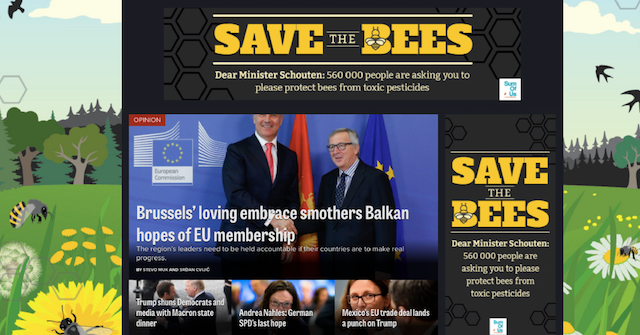Psychologist Sharon Blackie, in her TEDX talk that was
featured in last week’s blogpost, talked about telling a new kind of
story. She uses the word myth to mean
the underlying story of a culture (not as something that is false). Blackie said that when the current cultural
myth stops working, then the mythic misfits who recognize this dysfunction,
need to imagine new myths. She compared
this to the big fire going out, while small fires still burning can lean into
each other and become a new fire.
After hearing her talk a few times, I spent some time
thinking about what this new myth might sound like. Blackie spoke about the myth which is not
about the individual hero, but rather about the community. This new myth is not about bigger and better
but about appreciating what we already have.
There was one story
that I had heard recently that might fit this description. I heard the story in an email from a group
called SumofUs. SumOfUs is self-described as “a community of
people from around the world committed to curbing the growing power of
corporations.” They “want to buy from,
work for and invest in companies that respect the environment, treat their workers
well and respect democracy.” And they’re
not afraid to stand up to them when they don’t.
(SumOfUs website).
The story was about neonicotinoid insecticides that has
been shown to hurt bees who are of course critically important for pollination that allows humans to grow plants that provide us with food. Ontario was the first province in Canada to
ban neonics. Recently at a European
Union meeting, a ban on these insecticides was to be discussed. Bayer, a powerful company that produces
neonics has been fighting this ban since it was partially enacted in 2013.
We are used to hearing the story of powerful corporations being
able to control governments, individual people and nature, all in the name of
making more profit. They are playing
their part in the current cultural myth of a constantly growing economy. One wonders how economies can grow forever in
a world which is finite, but the myth still controls the world. CEO’s are by definition responsible only to
the shareholders of the company. They
are not responsible to the employees, the customers, the people who live in the
countries that they operate and certainly not the other species that share the
planet with people.
But here is where people who don’t believe that myth
created a new story. SumofUs reported
that through their on-line activities, 600,000 people signed their on-line
petition putting pressure on the EU members before the vote. Some SumOfUs
members donated money that was used to buy advertising space on big billboards
and in newspapers that EU commissioners would read to state the case for the
bees. And although it was close, the
neonic ban passed despite Bayer’s best efforts.
 |
| Ad in key Brussels media outlet |
SumofUs anticipates that Bayer will mount a court
challenge, but they are ready to meet this challenge. Instead of one hero going out to slay the
monster, hundreds of thousands of people have joined to convince their politicians
or representatives to limit the monster’s ability to put food production at
risk. They want Bayer to produce healthy
products, not products at any cost.
When you apply Blackie’s ideas to this story, you can see
that this is a story about how community forms to protect not just bees, but its
own food security. The protection is not
with weapons, but with convincing elected officials to represent the needs of
the many over the needs of the shareholders of one company. Of course the shareholders also need food,
but if they are only believing the myth of a constantly growing economy, the
myth that money is the primary source of security, then they may not realize
that this myth is putting them at risk.
They may not understand the true “cost” of this money.
So as we work together to save the bees, the bees will work together to save us. There is no individual hero or superhero, just all of us, taking our part and working together to sustain what we have. And as we do so, we will feel more appreciative for what we do have and we won't need to pursue more and more, better and better.
As more and more of these new stories play out, they will
begin to seem normal to us. But for now,
we have to look carefully for them, like little fires that are burning. We can add our fires to them and watch them
blaze.













